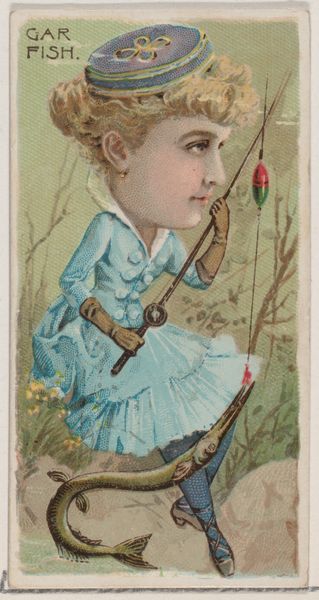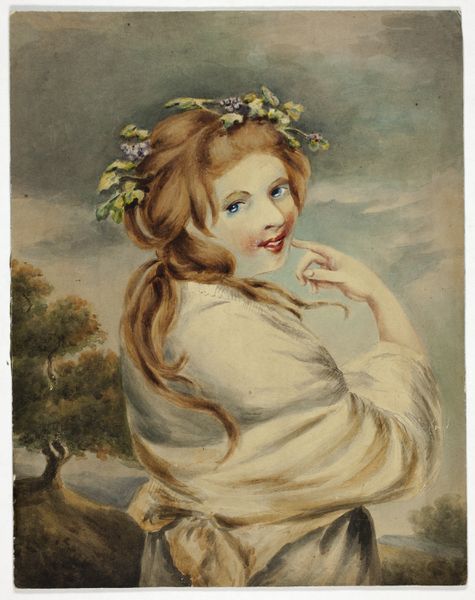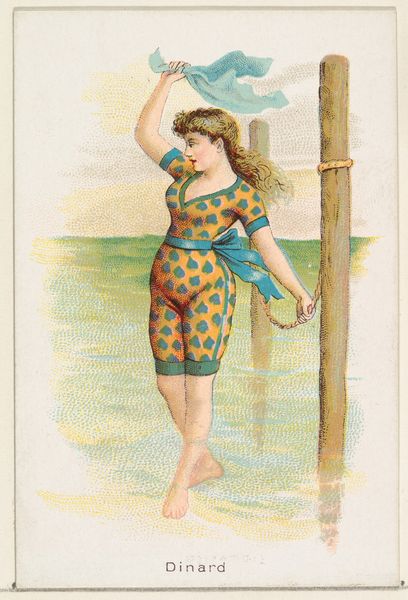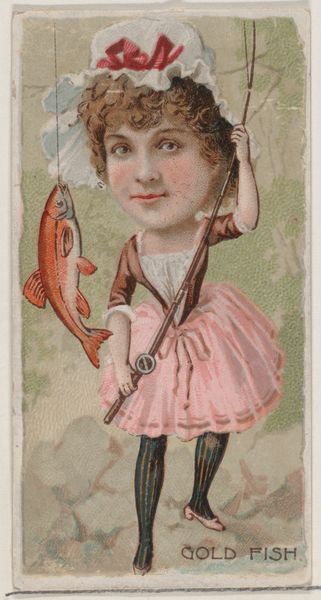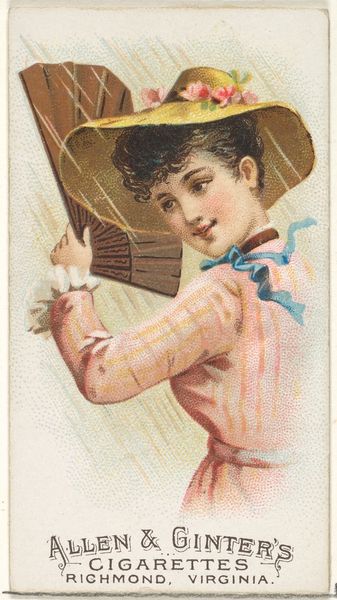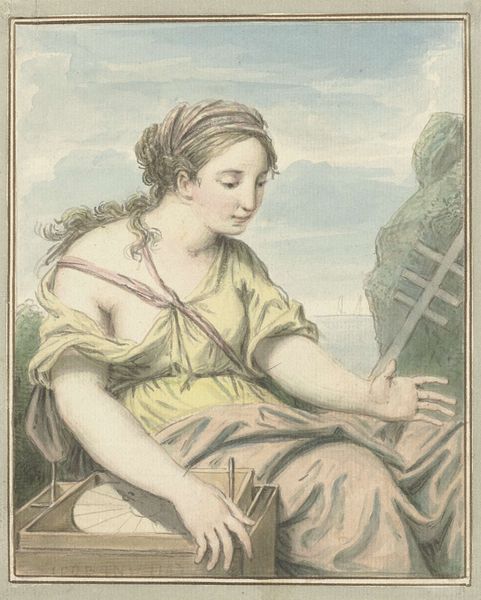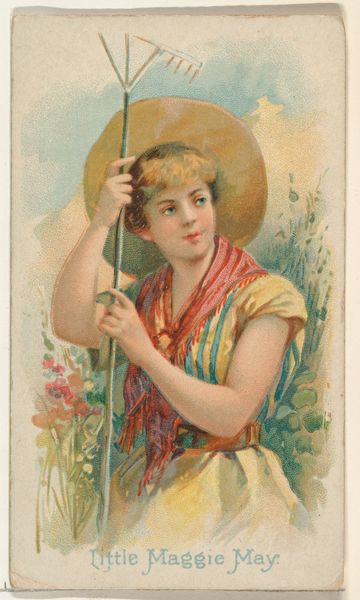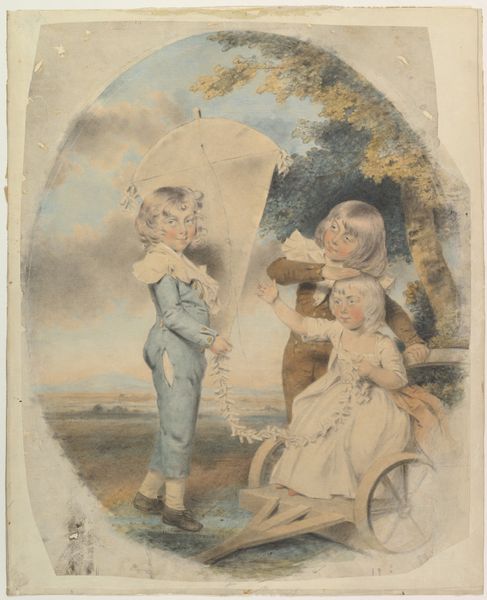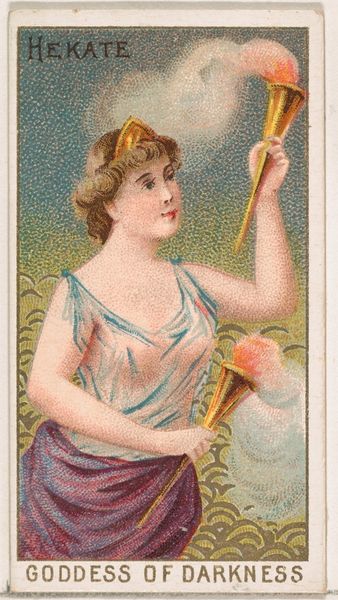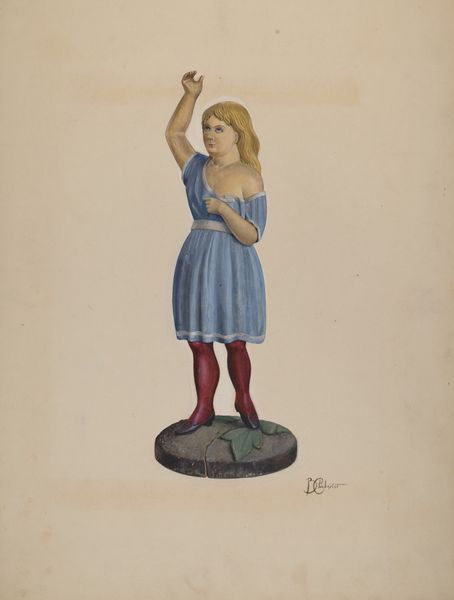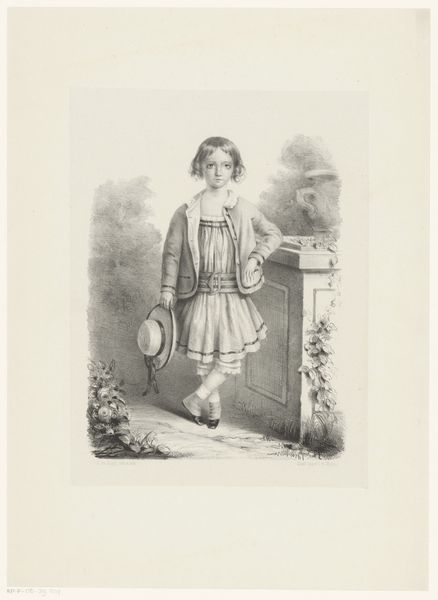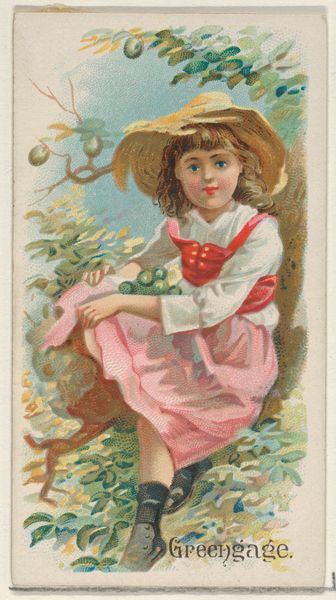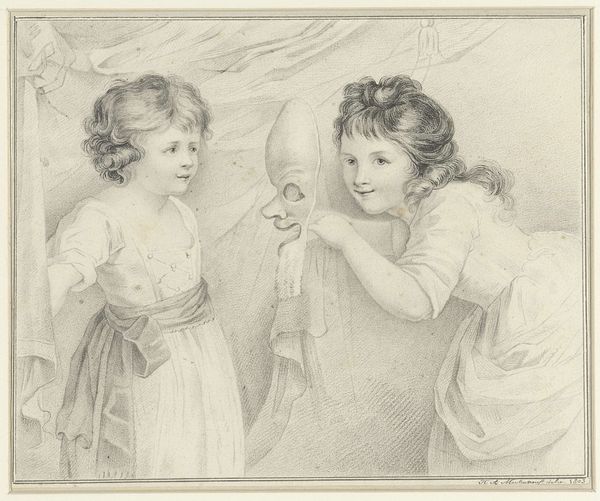
drawing, print, paper, watercolor
portrait
drawing
figuration
paper
watercolor
coloured pencil
watercolour illustration
genre-painting
academic-art
watercolor
realism
Dimensions: 260 mm × 180 mm
Copyright: Public Domain
Curator: At first glance, this image evokes a delicate serenity with its muted palette and soft brushstrokes. Editor: Today, we’re observing “Young Girl with Crop and Cricket Bat," a watercolor work whose author is currently unknown, although it resides here at the Art Institute of Chicago. Curator: The watercolor technique definitely informs the reading; you sense the process immediately. The wash effect creates a sense of luminosity, allowing light to filter through, creating depth and capturing the material essence of girlhood. The artist highlights the quality and accessibility of these pigments by choosing common materials such as colored pencils, drawing, and printing that is available to her—paper itself taking center stage. Editor: What strikes me is how the elements—the girl, her crop, the bat and ball—come together within a framework of academic and genre-painting conventions to portray innocence and class. Consider, for instance, the implications behind leisure that enabled her to occupy such social categories with sports! How are the power dynamics reflected and possibly even reinforced through something as benign seeming, say, like sports? Curator: Precisely. Consider the choice of a riding crop in relation to ideas of land, labor, and social control—it’s interesting that an object typically linked to agriculture is now almost reduced just into some other form, an almost purely decorative object that’s simultaneously both a tool as much anything! Editor: Absolutely. It makes you question what norms these children in painting upheld at their time period, and I also consider the broader public function this artwork fulfills beyond aesthetics—serving potentially as propaganda, and offering ways to perceive, or understand others outside one’s daily life given current sociopolitical trends then dominant for certain patron families, and later maybe now museums who may view collections given that collections also reflect politics itself. Curator: That's a key point! The social conditions for making artworks affect choices materially just how society is shaped to be too. Editor: Definitely. Thank you for highlighting ways material constraints interact complexly inside our societal roles and conditions across the board while creating or considering even mundane everyday artworks, let alone others which push against limitations imposed formally etc! Curator: Thanks—Likewise, I appreciate highlighting issues associated not just within media constraints for the art alone to be conceived successfully inside these environments from past era onward for generations still even till times changing later too from these considerations made before.
Comments
No comments
Be the first to comment and join the conversation on the ultimate creative platform.
